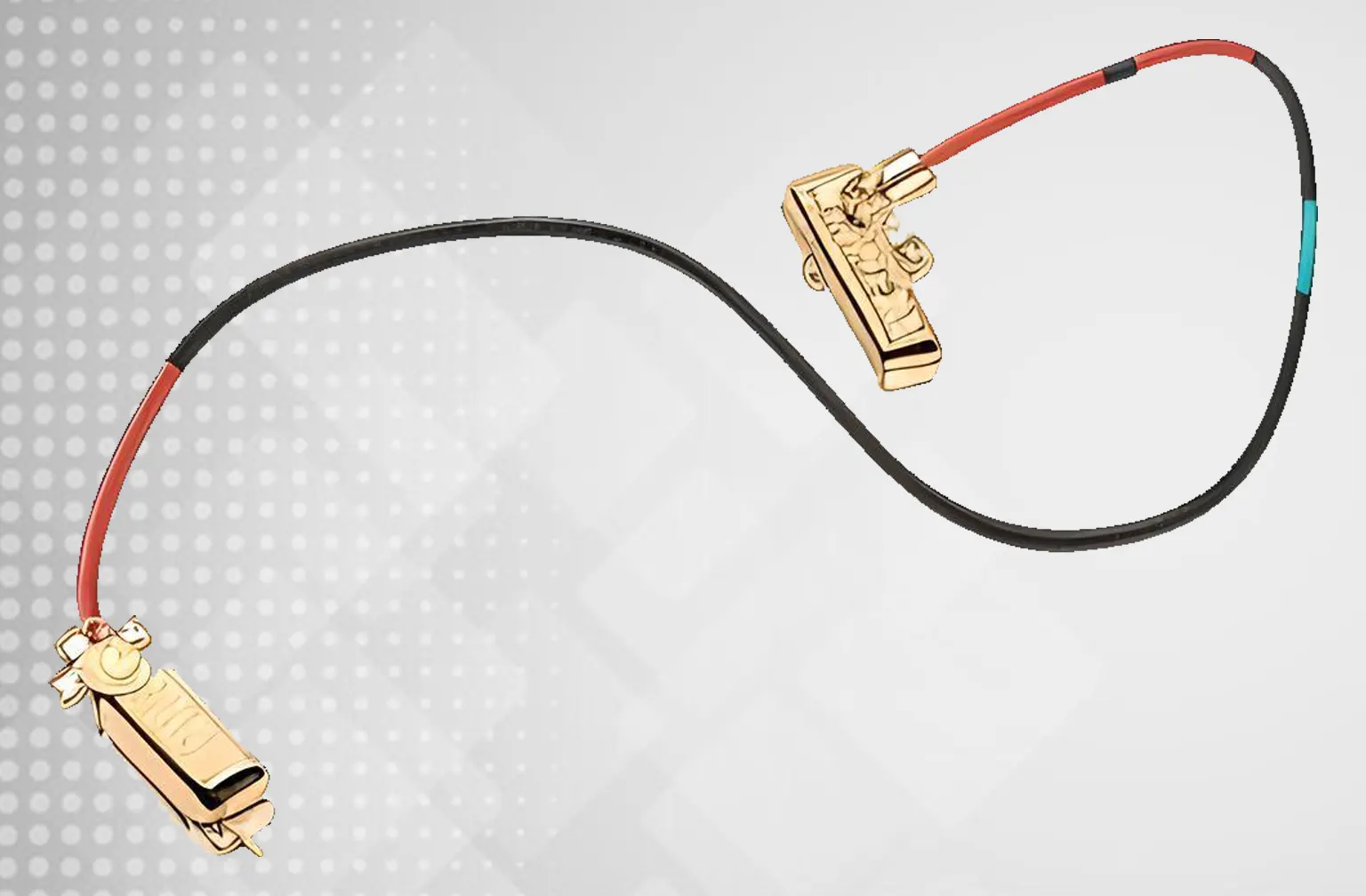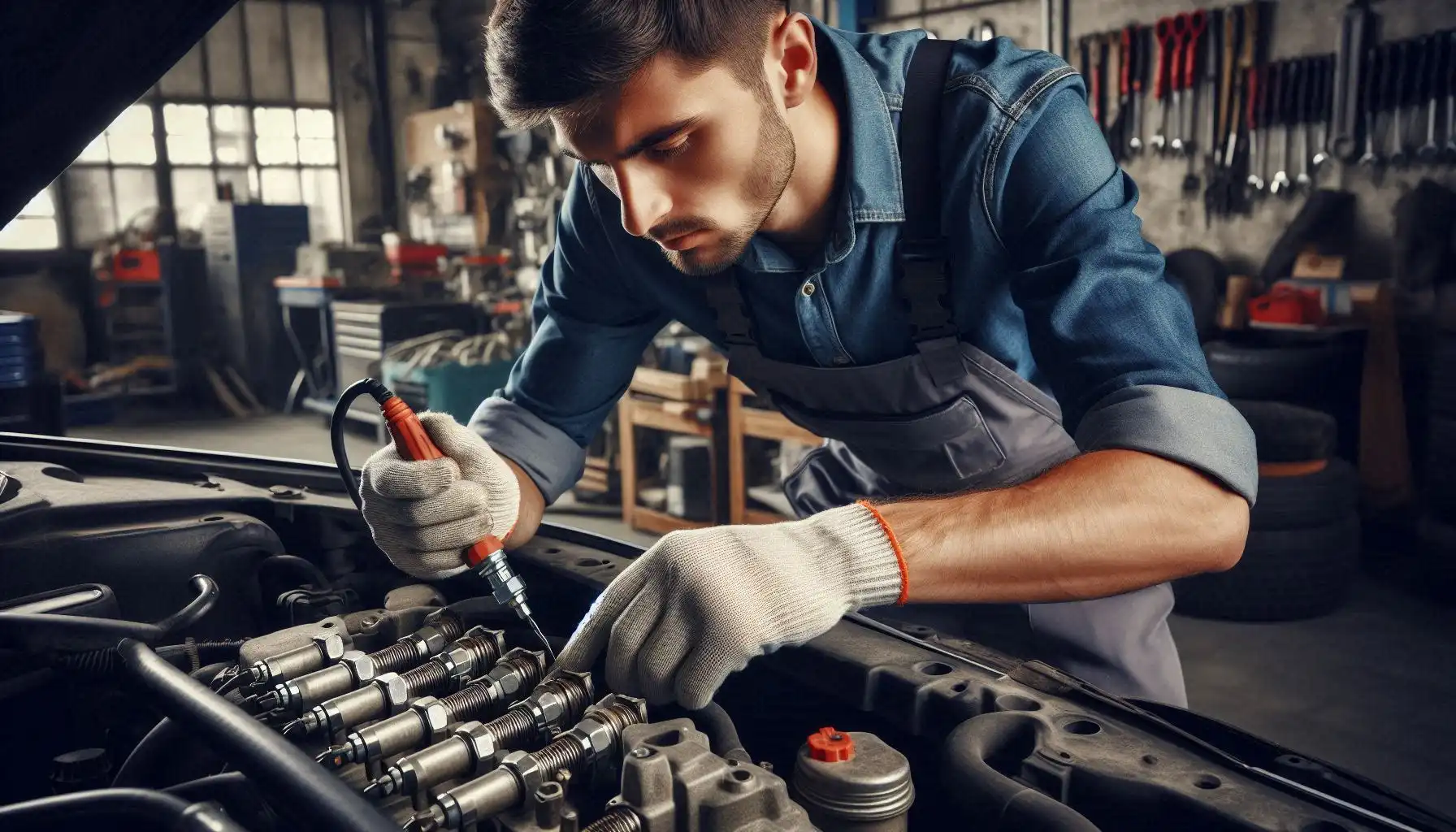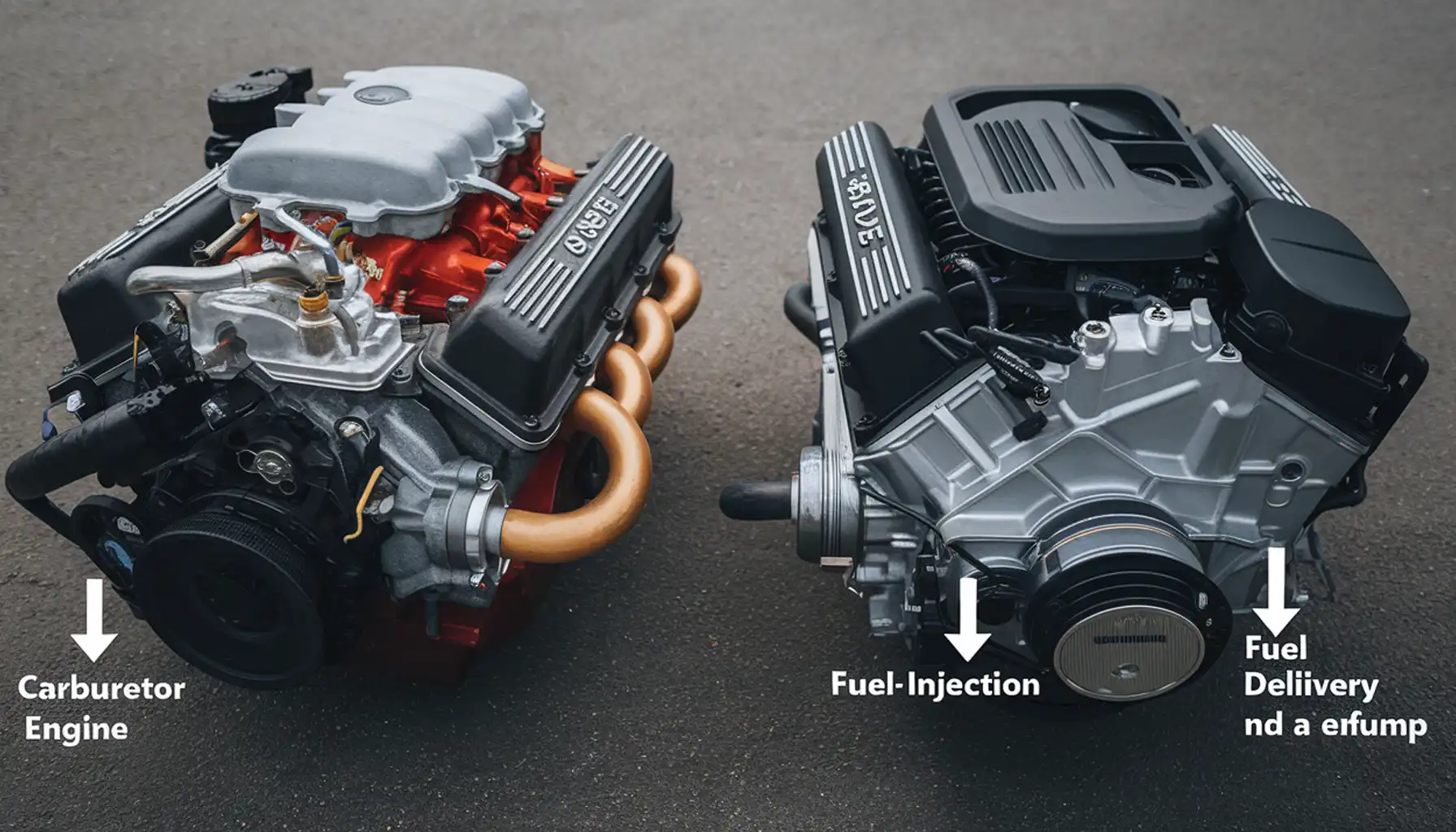Connecting Rod Material are super important parts of car engines. They connect the pistons to the crankshaft and change the up-and-down motion of the pistons into the circular motion of the crankshaft. When choosing materials for these rods, they need to be strong, stiff, durable, and able to handle wear and tear.
Unsure whether your budget rods are cutting it? We delve into the science behind material choices, revealing why a few extra bucks can save you big bucks (and headaches) down the line.

What steel are connecting rods made of?
Steel is one of the most common materials for connecting rods, as it offers a good balance of strength, stiffness, and cost. However, not all steel grades are suitable for connecting rods, as they have different properties and performance. Some of the steel grades that are commonly used for connecting rods are:
- Carbon steel: Carbon steel is the simplest and cheapest type of steel, as it contains only iron and carbon as the main alloying elements. Carbon steel has moderate strength and ductility, but low fatigue resistance and wear resistance. Carbon steel is usually used for low-performance engines or applications where cost is the main factor.
- Alloy steel: Alloy steel is a type of steel that contains other elements besides iron and carbon, such as manganese, chromium, nickel, molybdenum, etc. These elements improve the strength, hardness, toughness, fatigue resistance, and wear resistance of the steel. Alloy steel is more expensive than carbon steel, but it offers better performance and durability. Alloy steel is widely used for high-performance engines or applications where reliability and longevity are important.
- Stainless steel: Stainless steel is a type of steel that contains a high amount of chromium, which forms a thin layer of oxide on the surface of the steel and protects it from corrosion. Stainless steel has a high strength, stiffness, and fatigue resistance, but a low ductility and wear resistance. Stainless steel is usually used for marine or corrosive environments, where resistance to rust and corrosion is essential.
The elements of connecting rod
There are three main parts- the big end, the small end, and the shank. The big end attaches to the crankshaft and has a special design that allows it to move smoothly.
The small end connects to the piston and has a smooth surface to help it move easily. The shank connects the big end and the small end and is designed to make the connecting rod strong and lightweight.
The manufacturing process of connecting rod
The manufacturing process of connecting rods involves several steps, such as:
- Forging: Forging is a process that uses high pressure and temperature to shape the metal into the desired form. Forging improves the strength and toughness of the metal by aligning the grain structure and eliminating defects. Forging is usually used for steel connecting rods, as it offers a high quality and low cost.
- Casting: When we want to make a particular shape out of metal, we use a process called casting. Casting involves pouring molten metal into a mold, which creates the desired shape. While casting can produce intricate designs, it can also introduce imperfections and impurities into the metal. Aluminum connecting rods are often made using casting because it is lightweight and highly ductile.
- Machining: Machining is a process that uses cutting tools to remove excess material and create the final dimensions and features of a connecting rod. This process ensures accuracy, precision, and a smooth finish on the rod’s surfaces. Machining is commonly used for steel and aluminum connecting rods, providing high performance and quality.
- Heat treatment: Heat treatment is a process that modifies the metal’s microstructure and properties by using heating and cooling cycles. This process enhances the metal’s hardness, strength, fatigue resistance, wear resistance, and dimensional stability, while also relieving stress. Both steel and aluminum connecting rods typically undergo heat treatment because they offer various benefits to the metal.
Steel vs. the Rest: Choosing Your Connecting Rod Champions
We’ve covered the basics, but now it’s time to unleash your inner metallurgy nerd (or at least pretend for a few paragraphs). Buckle up, because we’re diving deep into the fascinating world of connecting rod materials.
Steel: The OG, but is it always the best?
Sure, steel is the tried-and-true champion of the connecting rod arena. It’s strong, affordable, and readily available. But hold on, not all steels are created equal! You’ve got your carbon steel, the budget-friendly option, but it’s like the gym newbie – strong enough for everyday tasks, but not built for high-performance races.
Then there’s alloy steel, the seasoned athlete, packed with extra elements like chromium and nickel for superior strength and endurance. This is your go-to for performance engines where pushing limits is the name of the game. Finally, there’s stainless steel, the flashy show-off, resistant to corrosion but not quite as strong as its alloyed brethren. Think marine engines or environments where rust is a constant threat.

Beyond Steel: Aluminum & Titanium Challengers Emerge!
Now, steel might be the king, but there are challengers to the throne. Aluminum enters the ring, lightweight and nimble, offering impressive weight reduction for those speed demons out there. Think faster revs and quicker acceleration, but remember, this lighter champion comes with a higher price tag and might not be as durable as steel in the long run. And then there’s the mysterious titanium, the exotic fighter with incredible strength-to-weight ratio. It’s like the titanium credit card of connecting rods – super cool, but prepare to empty your wallet (and maybe even sell your firstborn).
But wait, there’s more!
We haven’t even talked about how these materials are shaped! Forging, like hammering a piece of metal into submission, makes incredibly strong rods, but casting, similar to pouring molten metal into a mold, is cheaper and allows for complex shapes. Finally, machining comes in like a finishing touch, ensuring precision and smooth surfaces. Each process has its pros and cons, and the best choice depends on your budget, performance needs, and engine type.
So, the next time you think about connecting rods, remember, it’s not just about steel. It’s about understanding the different materials, their unique strengths and weaknesses, and how they work together to create the perfect champion for your engine’s needs. Now go forth and choose your connecting rod wisely, my friend!
Myth Busters: Debunking Connecting Rod Lies!
Hold on tight, gearheads! Before you get lured in by fancy marketing or internet whispers, let’s bust some common myths about connecting rod materials and performance:
Myth #1: All steel rods are built the same.
Reality: Just like craft beer lovers have different tastes, steel grades vary. Carbon steel is your daily driver, but for high-performance, alloy steel is the muscle car. Stainless steel shines in anti-rust zones, but its strength doesn’t quite match its shiny exterior. Choose the right type for your engine’s needs!
Myth #2: Lighter is always better.
Reality: Imagine your sports car needing a strong chassis – connecting rods need some weight to handle pressure. While aluminum rods shave off pounds, they might not last as long as their steel counterparts. Balance matters, so choose wisely!
Myth #3: Price tag equals performance.
Reality: Don’t get blinded by dollar signs! The best rod is the one that fits your engine and budget. Sometimes, a well-forged and treated domestic rod can perform just as well as an expensive import. Smart choices save you bucks!
Myth #4: Only high-performance engines need rod worries.
Reality: Even your daily commuter’s engine puts stress on rods. Regular checks and replacements prevent potential damage, saving you bigger headaches (and costs) down the road. Prevention is key!
Myth #5: Rod swaps are only for pros.
Reality: For experienced DIYers, changing rods isn’t impossible. But research your engine and chosen rods thoroughly, and make sure you have the right tools and skills. Safety first, always!

Quiz: Unleash Your Engine’s Potential: Which Connecting Rod Is Your Perfect Match?
Ready to optimize your engine’s performance and unlock hidden power? Choosing the right connecting rod is crucial, but with various options, it can be daunting. Fear not, gearheads! This quiz will guide you to the perfect connecting rod for your specific needs.
1. What kind of engine are you dealing with?
(a) Daily driver or budget-friendly project (think fuel efficiency and cost-effectiveness)
(b) Performance beast craving power and reliability (think high-revving sports cars)
(c) Marine marvel battling the elements (think corrosion resistance and durability)
2. How hot does your engine party get?
(a) Chilling out below 100°C (think moderate temperatures)
(b) Warming up between 100°C and 200°C (think spirited driving)
(c) Sizzling hot, exceeding 200°C (think high-performance applications)
3. Size matters, even for engines! What’s your engine’s weight and size?
(a) Lightweight and compact (think motorcycles or small engines)
(b) Moderate and balanced (think most car engines)
(c) Heavyweight and powerful (think large displacement engines)
4. Let’s get technical: What’s the shape of your connecting rod shank?
(a) Rectangular, offering a sturdy core (think budget-friendly options)
(b) Tubular, balancing strength and weight (think performance-oriented choices)
(c) I-beam, maximizing strength with minimal weight (think high-end applications)
5. Bearing the burden: What type of connecting rod bearing do you have?
(a) Bushing, simple and affordable (think low-power applications)
(b) Bearing insert, offering better performance and higher load capacity (think standard choice)
(c) No bearing, requiring specialized lubrication (think racing applications)
Results:
Mostly A’s: Value matters, and carbon steel might be your champion. It’s budget-friendly and suitable for moderate applications. Remember, it might not handle extreme heat or stress.
Mostly B’s: Performance is your game, and alloy steel is your ally. It offers superior strength, durability, and temperature resistance, perfect for unleashing your engine’s potential.
Mostly C’s: Corrosion is your enemy, and stainless steel is your shield. Its excellent resistance makes it ideal for marine or harsh environments. However, keep in mind its higher cost and potential weight considerations.Remember: This quiz is a starting point. Consider consulting a professional for specific recommendations based on your unique engine and goals.



